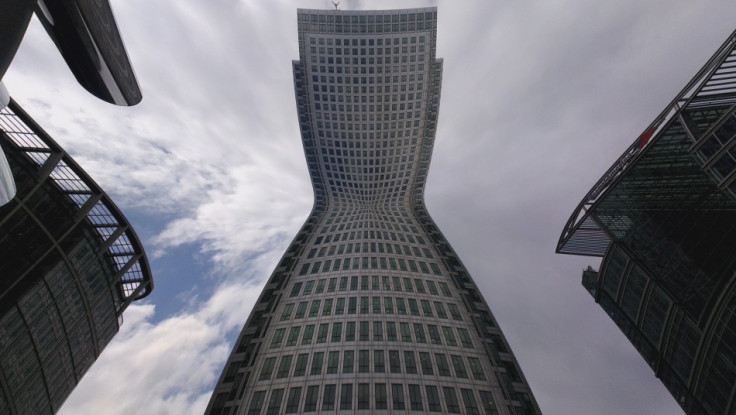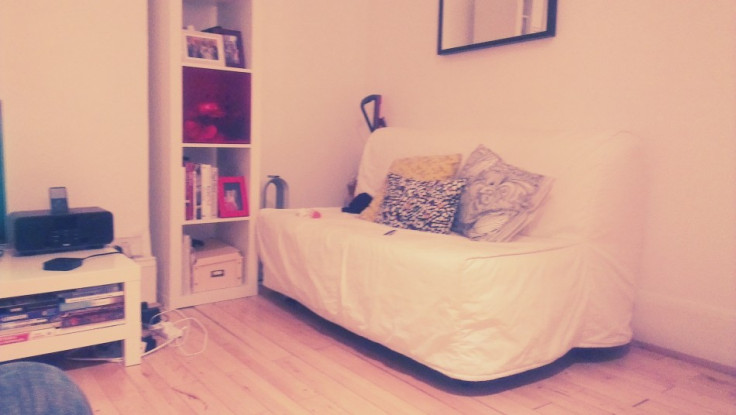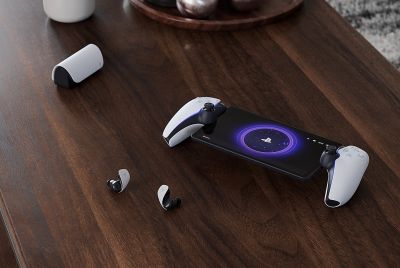HTC One X Review
- or How We Stopped Worrying and Learned to Love a Big Screen

Key Features:
- 4.7in Super IPS 720 x 1280 pixel display
- 1.5GHz quad-core Tegra 3 processor
- Android 4 .0 (Ice Cream Sandwich) with HTC Sense 4.0
- 32GB internal storage
- Price as reviewed: Free on £41-a-month contract with Vodafone
Introduction

HTC has pressed the reset button after a rather difficult year in 2011. At the beginning of 2012 it launched its new One series in a bid to simplify its various offerings. The One V, due out at the end of the month is its budget offering, while the One S is the company's slim mid-range phone which is now available, alongside the company's flagship phone, the HTC One X.
On the face of it, the One X has everything going for it. A large high resolution screen, slim profile, the latest version of Android and possibly most importanyllt it is the first phone to arrive featuring the quad-core Tegra 3 processor. However, we've seen all this before from HTC, with phones like the Sensation, but they have failed to deliver on their promise. Can the One X help turn around HTC's flagging fortunes? Let's find out:
HTC One X Design and Build Quality

There is no getting away from it, the HTC One X is a big slab of a phone. It has a footprint of 134.4 x 69.9mm yet retains a slim profile of just 8.9 mm. While you won't find any metal in its construction (expcet around the camera that is), the combination of a curved Gorilla Glass screen and unibody polycarbonate casing make this feel like the premium phone it is.
When the Samsung Galaxy S2 came out last year, we felt that despite it being a great phone, we didn't get the sense that we were holding a top-of-the-line phone. With the One X, we do. The difference? It weighs more.
The Galaxy S2 weighed in at 116g while the One X tips the scales at 130g. While 14g may not seem like much, the difference is marked. There is more heft when you are holding the One X and it feels remarkably solid in your hand considering its slim profile. There is no flex here, which you certainly got with the S2.

HTC's designers have clearly thought a lot about the look and feel of the phone and incorporated a gentle, almost unnoticable curve, from bottom to top, which makes it great to hold and comfortable while making even long phone calls.
The front is dominated by the 4.7in screen (more of which later) which sits above three capacitive buttons for back, home and more apps, which are all nice and responsive. There is a narrow black bezel around the screen, but it is barely noticable.
HTC made the decision to curve the screen around the sides of the phone which makes it a pleasure to swipe through photos, or take those sharp corners in Temple Run. The unibody polycarbonate shell, which was white in our review sample (though a grey version of the One X is also available), extends around the top and bottom of the phone to the front.

On the top you will find the neatly drilled, almost invisible speaker holes alongside the 1.3 megapixel front-facing camera. There is also a notification light here which can be set to blink green when missed calls, emails or messages, and glos orange when charging. HTC has done its best not to break up the lines of the One X and there is not much to see in the way of ports and connection on the phone.
HTC One X Connectivity
On the left-hand edge you will find an uncovered microUSB port for charging and data transfer but which also supports Mobile High-Definition Link (MHL) v1.0 for outputting high def movies from your phone - though you will need the right cable. This essentially replaces the need for a separate HDMI port.
On the right-hand edge you will find a volume rocker which blends in with the white unibody design and is in the perfect location and is nice and responsive. Indeed it works a little too well, as we pressed it by accident on a number of occasions by simply brushing our finger over it.

Where we might have expected a physical shutter button for the camera, there's none. HTC traditionally doesn't put these buttons on its flagship devices, but we simply cannot think why as it wouldn't detract from the overall look, and would add so much to the phone, especially considering (spoiler alert) how good the camera on this phone is.
On the top edge you will find the power button and 3.5mm headphone jack, as well as the Micro SIM tray. HTC even include a handy SIM tray removal tool in the box, which is a lot better than the iPhone's flimsy piece of wire. The SIM tray is barely noticeable and allows you to easily switch SIM cards, if that's your thing, without having to power off your phone.
One point to note is that the power button is a little awkward to reach, especially if like us you r have rather dainty digits. It might have been prudent to locate the button on the right-hand edge considering the space left by the lack of a physical shutter button.

On the rear you'll find the 8 megapixel camera and accompanying LED flash. These are surrounded by a circular metal ring, which protrudes slightly from the phone's body, but not so much as to ruin the otherwise slim profile of the One X.
At the bottom of the rear cover you find the speaker along with the Beats Audio logo, telling you that the One X, like most HTC phones these days, is infused with Beats technology to make it sound better.
In the middle of the rear panel is a metallic HTC logo which is slight raised and adds a classy touch to the overall look. There are also five mysterious-looking metal contacts along the right-hand edge of the rear cover. These are used for charging and data transfer with compatible docking stations and other accessories.

Unlike most Android phones, and following in the footsteps of the iPhone, the HTC One X does not have a removable battery and users cannot access the innards of the phone. While this won't bother most people, it also means there is no way of expanding the 32GB internal storage as there is no microSD card slot. More and more high-end phones seem to be going down this route and it's not a positive step in our minds.
While the white polycarbonate cover resists scratches and fingerprints well, it did however pick up dirt pretty easily, meaning our sparkling new HTC One X looked quite grubby after only a few hours of handling - but maybe we've just got dirty hands. These smugdes are easily removable with a damp cloth.
Overall we love the look and feel of the One X. It feels solid in the hand and while at times accessing the power button was awkward due to the sheer size of the phone, we rarely felt this phone was too big, which is not something we expected to happen.
HTC One X Hardware, Battery and Performance
Inside the phone is powered by a 1.5Ghz Tegra 3 System-on-Chip (SoC) from Nvidia. The company is promoting Tegra 3 as having 4-PLUS-1 architecture. The PLUS-1 in this case is a low-power, fifth companion core to the main four processing cores, which is put to use when the phone is idle to take care of less power-intensive actions.
In theory this should mean that Tegra 3-powered devices get the benefit of quad-core CPU power as well as benefiting from better battery life. Combined with this is a 12-core GeForce GPU to make those 3D games blisteringly fast. Purely in terms of benchmarks, the One X is up there with the iPhone 4S or the Galaxy Nexus.
In terms of everyday use, you instantly feel that processing power. The phone's interface flies along and you'll see no lag when transitioning from one app to another. HD and 3D gaming is also practically flawless and the One X handles 1080p video without a problem. While the default video player may not be able to handle some of the more esoteric codecs out there, there are plenty of Android apps available which can.

As we said, the HTC One X has baked-in Beats Audio technology which is meanto to improve the overall audio quality of the phone, but as before, we can hear it. It simply sounds like they've turned up the bass when you have Beats enabled. The Beats feature can however be turned off easily from the Settings menu.
However, overall audio quality from the One X is excellent. The phone's speak is clear and bright and we were able to hear who we were talking to even in crowded and noist situations. The people on the other end of the line reported similarly clear audio coming from us, with the dual-mic system cancelling out a lot of the background noise.
Turning to battery life, and despite what Nvidia and HTC say about the 4-PLUS-1 configuration offering greater efficiency, battery life for the HTC One X is just about acceptable. We just managed to get through a day's normal use before the phone died and in more intensive tests, streaming HD video and playing intensive 3D games, we just about managed five hours.
This is no surprise as the 1800mAh battery is powering that bright 4.7in HD screen and dealing with four Cortex A9 cores at once. We would have liked a battery life pushing two days normal use, but unfortunately battery tech is still playing catch-up to large high-res screens and powerful processors in the smartphone world.
HTC One X Screen
The single best feature of the HTC One X is it 4.7in Super IPS display with a HD pixel resolution of 720 x 1,280. It is simply the best screen we have ever seen on a phone. It has a pixel density of 316ppi which is almost identical to the 326ppi seen on the Retina Display of the 3.5in iPhone 4 and 4S screens.

To have a pixel density that high on a screen this large is remarkable. It means that the reading website while fully zoomed out is a breeze and text remains pin sharp. Besides the resolution, the colours from the screen are bright and vivid, thanks to superb colour saturation.
Watching movies and viewing photos is a pleasure on this phone and viewing angles are almost flawless. Simply put, it is now the screen to be beaten in smartphone terms.
HTC One X Camera

Looking at photos on the incredible screen is one thing, but what about creating them? Along with "Authentic Audio", the tagline for this phone promotes its "Amazing Camera." The HTC One X has a rear camera with an 8 megapixel sensor featuring auto-focus and an LED flash. HTC proclaimed that this camera would be a game changer in terms of smartphone cameras when it launched the One X last in February. Sadly this is not the case.
Don't get us wrong, the camera is good, very good in fact, but in terms of smartphone cameras and not in terms of dedicated point-and-shoot cameras. What people really want is a smartphone camera which replaces their £100 compact camera. The One X camera delivers clear, sharp pictures, as you can see below, but they just fall short of the quality we might expect from a decent point-and-shoot. Low light performance in particular wasn't great.

The 1080p video the camera is capable of shooting was again excellent, but only in smartphone terms and is not comparable to footage shot with a proper HD camcorder, even an entry level one.
However we must give credit to HTC for the camera interface. The company's ImageSense app is a joy to use and combines video and still recording in one view, without the need to continually switch between the two.
Another plus point for the camera is the almost complete eradication of shutter lag, meaning you can take pictures quickly without a gap. This feature was also present in the Galaxy Nexus and is a feature we hope all high-end smartphones incorporate in the future.

The UI also gives you quick access to a range of filters such as Distortion, Vignette, Dots or Country to let you shoot some creative stills - which you can see samples of at the end of the review.
There is also a smile detection mode which promises to take a snap automatically when someone smiles, but we found this to work intermittently at best, and we would have liked to see a panorama mode included too. Hwoever, overall the camera app is excellent and one of the best we've seen.
HTC One X Ice Cream Sandwich and Sense 4.0
The One X runs Android 4.0 (Ice Cream Sandwich) which has been overlayed with HTC's proprietary Sense 4.0 UI. For some, this is an annoyance, but it seems as if HTC is listening to users' feedback and Sense 4.0 is a definite improvement over Sense 3.0.
The first thing you will notice is the new lock screen which has been tweaked by HTC to allow you to jump straight into one of four customisable apps. This involves dragging the app into the ring at the bottom of the screen, and works well. You can put whatever app you want on the lockscreen, customisable through the Settings menu.

Launching into the main interface, you get a choice of seven customisable homescreens. On the main homescreen you'll seen the now-iconic HTC clock/weather widget, but if this isn't to your taste, it is easy to get rid of, and HTC provides a lot of alternatives for you to chose from.
In Sense 4.0, HTC has tweaked the way you place widgets and app shortcuts on the homescreen. Press and hold the homescreen you want to alter and a zoomed-out interface will appear, showing you all the widgets and apps available. It's a neat system and allows you to see what you have placed on all homescreens at once.
A new addition to Android 4.0 was the ability to switch quickly between apps by pressing the button on the right of the three capacitive buttons below the screen. On the HTC One X, this brings up a stylised version of the app switcher and while it looks good, it isn't the easiest to navigate and the plain ole Android version might have been better.

Overall Sense 4.0 combined with Android 4.0 is a nice mix. The interface is slick and looks great, with a lot of customisation possible. While vanilla Android 4.0 may have been preferable for many, as seen on the Samsung Galaxy Nexus, at least HTC seems to be moving in the right direction with its latest version of Sense.
HTC One X Verdict
The HTC One X is the Android phone we have been waiting for. While not big fans of large screens until now, the sheer quality of the 4.7in display on the One X is remarkable, and thanks to subtle design decisions, the big phone feels comfortable, even in our small hands.
Allied with the quad-core processing power of the Tegra 3 chip, the latest version of Android, an excellent camera and a premium feel, this is the best Android phone on the market today. However at £500 SIM free, non-expandable storage and with average battery life, some may question its status as king of the Android market (and possibly smartphone market in general). But for us, these are minor quibbles and the HTC One X is the best phone on the market today.
Scores:
- Overall: 9/10
- Battery: 7/10
- Design: 10/10
- Screen: 10/10
- Value: 8/10
The Good
- Best smartphone screen ever
- Superb design
- Great camera
- Fast performance
The Bad
- Average battery life
- Non-expandable memory
- Expensive
HTC One X Camera and Video Samples



t


© Copyright IBTimes 2025. All rights reserved.






















